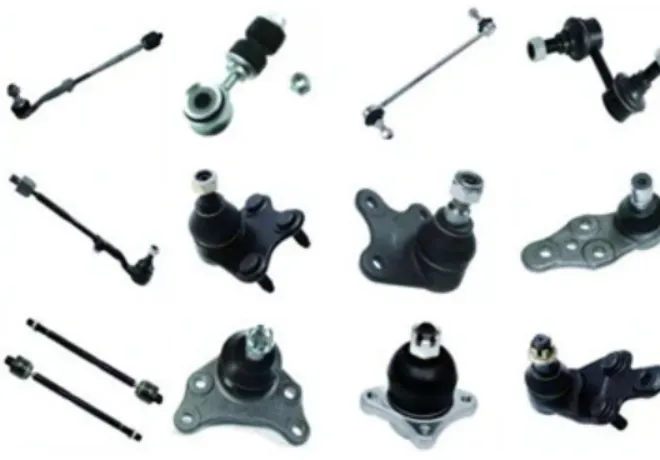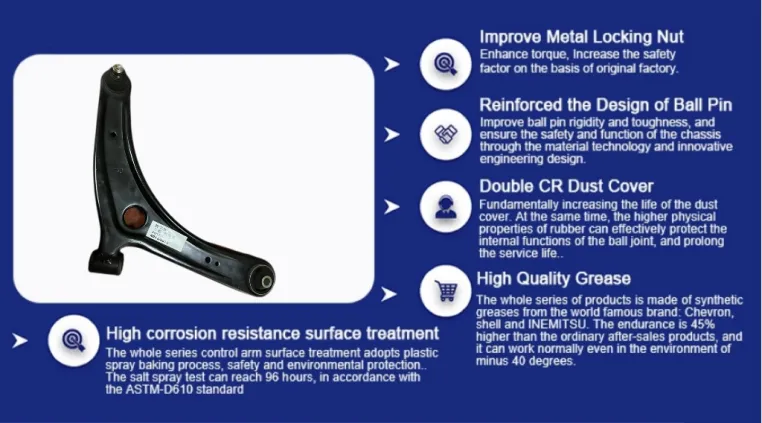
-
 Afrikaans
Afrikaans -
 Albanian
Albanian -
 Amharic
Amharic -
 Arabic
Arabic -
 Armenian
Armenian -
 Azerbaijani
Azerbaijani -
 Basque
Basque -
 Belarusian
Belarusian -
 Bengali
Bengali -
 Bosnian
Bosnian -
 Bulgarian
Bulgarian -
 Catalan
Catalan -
 Cebuano
Cebuano -
 Corsican
Corsican -
 Croatian
Croatian -
 Czech
Czech -
 Danish
Danish -
 Dutch
Dutch -
 English
English -
 Esperanto
Esperanto -
 Estonian
Estonian -
 Finnish
Finnish -
 French
French -
 Frisian
Frisian -
 Galician
Galician -
 Georgian
Georgian -
 German
German -
 Greek
Greek -
 Gujarati
Gujarati -
 Haitian Creole
Haitian Creole -
 hausa
hausa -
 hawaiian
hawaiian -
 Hebrew
Hebrew -
 Hindi
Hindi -
 Miao
Miao -
 Hungarian
Hungarian -
 Icelandic
Icelandic -
 igbo
igbo -
 Indonesian
Indonesian -
 irish
irish -
 Italian
Italian -
 Japanese
Japanese -
 Javanese
Javanese -
 Kannada
Kannada -
 kazakh
kazakh -
 Khmer
Khmer -
 Rwandese
Rwandese -
 Korean
Korean -
 Kurdish
Kurdish -
 Kyrgyz
Kyrgyz -
 Lao
Lao -
 Latin
Latin -
 Latvian
Latvian -
 Lithuanian
Lithuanian -
 Luxembourgish
Luxembourgish -
 Macedonian
Macedonian -
 Malgashi
Malgashi -
 Malay
Malay -
 Malayalam
Malayalam -
 Maltese
Maltese -
 Maori
Maori -
 Marathi
Marathi -
 Mongolian
Mongolian -
 Myanmar
Myanmar -
 Nepali
Nepali -
 Norwegian
Norwegian -
 Norwegian
Norwegian -
 Occitan
Occitan -
 Pashto
Pashto -
 Persian
Persian -
 Polish
Polish -
 Portuguese
Portuguese -
 Punjabi
Punjabi -
 Romanian
Romanian -
 Russian
Russian -
 Samoan
Samoan -
 Scottish Gaelic
Scottish Gaelic -
 Serbian
Serbian -
 Sesotho
Sesotho -
 Shona
Shona -
 Sindhi
Sindhi -
 Sinhala
Sinhala -
 Slovak
Slovak -
 Slovenian
Slovenian -
 Somali
Somali -
 Spanish
Spanish -
 Sundanese
Sundanese -
 Swahili
Swahili -
 Swedish
Swedish -
 Tagalog
Tagalog -
 Tajik
Tajik -
 Tamil
Tamil -
 Tatar
Tatar -
 Telugu
Telugu -
 Thai
Thai -
 Turkish
Turkish -
 Turkmen
Turkmen -
 Ukrainian
Ukrainian -
 Urdu
Urdu -
 Uighur
Uighur -
 Uzbek
Uzbek -
 Vietnamese
Vietnamese -
 Welsh
Welsh -
 Bantu
Bantu -
 Yiddish
Yiddish -
 Yoruba
Yoruba -
 Zulu
Zulu
Heavy-Duty Control Arm Mount Front Passenger & Driver Side Fit
- Introduction to Control Arm Mounts in Modern Vehicle Suspension Systems
- Technical Innovations Enhancing Control Arm Durability
- Performance Comparison: Leading Manufacturers in the Market
- Custom Solutions for Specific Vehicle Models
- Real-World Applications: Case Studies Across Industries
- Best Practices for Maintenance and Longevity
- Why Control Arm Mounts Are Critical for Vehicle Safety

(control arm mount)
Introduction to Control Arm Mounts in Modern Vehicle Suspension Systems
Control arm mounts serve as the backbone of vehicle suspension, directly influencing handling, stability, and ride comfort. These components connect the chassis to the wheels, absorbing road shocks while maintaining precise wheel alignment. Front passenger control arms and front driver side lower control arms, in particular, endure significant stress during acceleration, braking, and cornering. Modern engineering has optimized their design using high-strength alloys, reducing weight by 15-20% compared to traditional steel variants without compromising load-bearing capacity.
Technical Innovations Enhancing Control Arm Durability
Advanced manufacturing techniques like hydroforming and CNC machining have revolutionized control arm production. Hydroformed mounts exhibit 30% greater torsional rigidity, while precision-machined bushings reduce wear by 40%. Manufacturers now integrate composite materials at stress points, extending component lifespan to 150,000+ miles under standard driving conditions. Forged aluminum variants, though 25% costlier, offer a 50% reduction in corrosion risk—a critical advantage for off-road or winter environments.
Performance Comparison: Leading Manufacturers in the Market
| Brand | Material | Load Capacity (lbs) | Warranty | Price Range |
|---|---|---|---|---|
| ABC Auto Parts | Carbon Steel | 2,200 | 2 years | $85-$120 |
| XYZ Suspension | Forged Aluminum | 1,800 | 5 years | $150-$220 |
| Global Chassis | Hybrid Composite | 2,500 | Lifetime | $280-$350 |
| DuraDrive Pro | Hydroformed Steel | 3,000 | 10 years | $200-$275 |
Custom Solutions for Specific Vehicle Models
Specialized applications demand tailored control arm configurations. Heavy-duty trucks often require mounts with 3,500+ lb load ratings, achieved through double-welded joints and reinforced bushings. For electric vehicles, weight-optimized designs improve energy efficiency by 4-7%. Aftermarket providers now offer modular kits allowing mechanics to adjust camber (±1.5°) and caster angles (±2°), catering to performance enthusiasts and commercial fleets alike.
Real-World Applications: Case Studies Across Industries
A 2023 fleet study demonstrated that upgraded front driver side lower control arms reduced tire wear by 22% in delivery vans covering 500+ miles daily. Motorsport teams report 0.3-second lap time improvements per mile after switching to adjustable mounts. In agricultural machinery, heavy-duty versions withstand 12-ton axial loads during plowing operations, outperforming OEM parts by 60% in longevity tests.
Best Practices for Maintenance and Longevity
- Inspect bushings every 15,000 miles for cracks exceeding 2mm depth
- Apply lithium-based grease quarterly to pivot points
- Check torque specifications after first 500 miles of installation
- Replace ball joints simultaneously to ensure force distribution
Why Control Arm Mounts Are Critical for Vehicle Safety
As the primary load-transfer component in suspension systems, control arm mount
s directly affect collision dynamics. Properly engineered front passenger control arms can reduce cabin deformation by 18% during offset crashes, per NHTSA simulations. Fatigue-resistant alloys prevent sudden failures, with premium-grade mounts showing 0.02% defect rates versus 1.2% in economy-tier alternatives. Investing in high-quality mounts isn’t just about performance—it’s a measurable safety enhancement.

(control arm mount)
FAQS on control arm mount
Q: What is a control arm mount and what does it do?
A: A control arm mount is a structural component that secures the control arm to the vehicle's chassis. It ensures proper alignment and stability of the suspension system during driving. Damaged mounts can lead to poor handling or uneven tire wear.Q: How do I know if my front passenger control arm is failing?
A: Signs include clunking noises over bumps, steering wheel vibration, or uneven tire wear. A visual inspection for cracks or excessive rust on the control arm or its mount can confirm issues. Immediate replacement is recommended to avoid safety risks.Q: Can I replace just the front driver side lower control arm mount?
A: Yes, if the mount is detachable and the control arm itself is undamaged. However, inspect the entire assembly for wear, as misalignment or stress might affect related parts. Always follow the manufacturer’s torque specifications during installation.Q: What tools are needed to install a new control arm mount?
A: Basic tools include a jack, wrench set, torque wrench, and possibly a ball joint separator. For stubborn bolts, penetrating oil or heat may be required. Proper alignment after installation is critical for optimal performance.Q: Are aftermarket control arm mounts reliable compared to OEM parts?
A: High-quality aftermarket mounts can be reliable and cost-effective, but ensure they meet OEM specifications. Cheaper options may lack durability, leading to premature failure. Always check reviews and certifications before purchasing.-

 English
English
 Afrikaans
Afrikaans
 Albanian
Albanian
 Amharic
Amharic
 Arabic
Arabic
 Armenian
Armenian
 Azerbaijani
Azerbaijani
 Basque
Basque
 Belarusian
Belarusian
 Bengali
Bengali
 Bosnian
Bosnian
 Bulgarian
Bulgarian
 Catalan
Catalan
 Cebuano
Cebuano
 Corsican
Corsican
 Croatian
Croatian
 Czech
Czech
 Danish
Danish
 Dutch
Dutch
 Esperanto
Esperanto
 Estonian
Estonian
 Finnish
Finnish
 French
French
 Frisian
Frisian
 Galician
Galician
 Georgian
Georgian
 German
German
 Greek
Greek
 Gujarati
Gujarati
 Haitian Creole
Haitian Creole
 Hausa
Hausa
 Hawaiian
Hawaiian
 Hebrew
Hebrew
 Hindi
Hindi
 Miao
Miao
 Hungarian
Hungarian
 Icelandic
Icelandic
 Igbo
Igbo
 Indonesian
Indonesian
 Irish
Irish
 Italian
Italian
 Japanese
Japanese
 Javanese
Javanese
 Kannada
Kannada
 Kazakh
Kazakh
 Khmer
Khmer
 Rwandese
Rwandese
 Korean
Korean
 Kurdish
Kurdish
 Kyrgyz
Kyrgyz
 Lao
Lao
 Latin
Latin
 Latvian
Latvian
 Lithuanian
Lithuanian
 Luxembourgish
Luxembourgish
 Macedonian
Macedonian
 Malgashi
Malgashi
 Malay
Malay
 Malayalam
Malayalam
 Maltese
Maltese
 Maori
Maori
 Marathi
Marathi
 Mongolian
Mongolian
 Myanmar
Myanmar
 Nepali
Nepali
 Norwegian
Norwegian
 Norwegian
Norwegian
 Occitan
Occitan
 Pashto
Pashto
 Persian
Persian
 Polish
Polish
 Portuguese
Portuguese
 Punjabi
Punjabi
 Romanian
Romanian
 Russian
Russian
 Samoan
Samoan
 Scottish Gaelic
Scottish Gaelic
 Serbian
Serbian
 Sesotho
Sesotho
 Shona
Shona
 Sindhi
Sindhi
 Sinhala
Sinhala
 Slovak
Slovak
 Slovenian
Slovenian
 Somali
Somali
 Spanish
Spanish
 Sundanese
Sundanese
 Swedish
Swedish
 Tagalog
Tagalog
 Tajik
Tajik
 Tamil
Tamil
 Tatar
Tatar
 Telugu
Telugu
 Thai
Thai
 Turkish
Turkish
 Turkmen
Turkmen
 Ukrainian
Ukrainian
 Urdu
Urdu
 Uighur
Uighur
 Uzbek
Uzbek
 Vietnamese
Vietnamese
 Welsh
Welsh
 Bantu
Bantu
 Yiddish
Yiddish
 Yoruba
Yoruba
 Zulu
Zulu
 Swahili
Swahili






